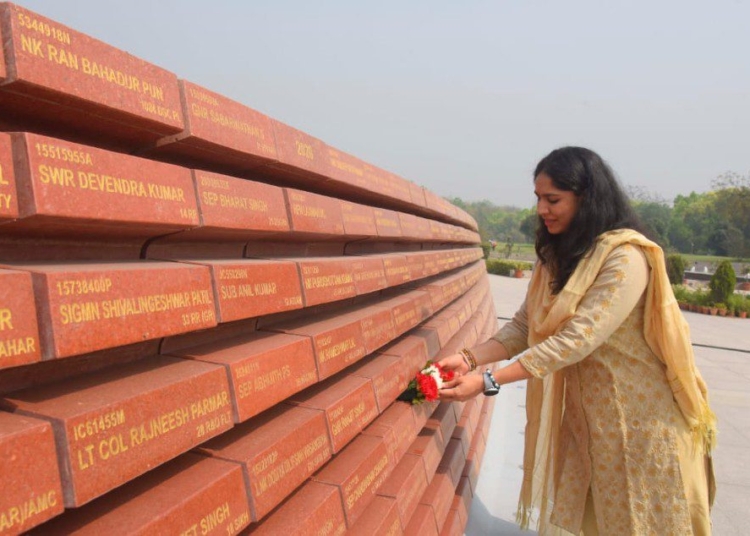Military memorials and monuments are powerful ways to pay tribute to those who have served and sacrificed for our country. They preserve the memory and history of our armed forces, allowing us to understand and appreciate the sacrifices made by our military personnel. These structures also serve as educational tools, teaching future generations about the impact of wars and conflicts. There are different types of military memorials and monuments, including war memorials, veterans memorials, and national cemeteries. They have a profound impact on individuals and communities, providing spaces for personal reflection, healing, and remembrance. With the advancements in technology, these memorials are embracing digital tools to enhance the memorialization process, ensuring that the stories and sacrifices of our heroes are preserved for future generations. Ultimately, military memorials and monuments play a crucial role in honoring, remembering, and celebrating the bravery, commitment, and selflessness of our servicemen and women.
Heading 1: Paying Homage to Heroes: Exploring Military Memorials and Monuments
Introduction:
As a society, we often pay tribute to those who have served and sacrificed for our country through various means of remembrance. One of the most powerful ways to honor these heroes is through military memorials and monuments. These structures serve as physical reminders of the bravery, commitment, and selflessness exhibited by our servicemen and women. In this article, we will explore the significance of military memorials and monuments, their role in preserving history, and the impact they have on both individuals and communities.
Heading 2: The Importance of Military Memorials and Monuments
Military memorials and monuments hold immense importance in preserving the memory and history of our armed forces. They help us understand and appreciate the countless sacrifices made by our military personnel, reminding us of the price they paid to protect our freedom and values. These structures act as a testimony to the bravery and heroism displayed on and off the battlefield.
Moreover, military memorials and monuments serve as educational tools, teaching future generations about the history and impact of wars and conflicts. By visiting these sites, young people can gain a deeper understanding of the sacrifices made by their forefathers, fostering a sense of gratitude, patriotism, and respect.
Heading 3: Types of Military Memorials and Monuments
There is a wide variety of military memorials and monuments, each symbolizing different aspects of our military history and culture. Some of the most common types include:
1. War Memorials: These memorials pay tribute to those who have fallen in specific wars, such as World War I, World War II, or the Vietnam War. They often include names of the deceased and serve as a place for reflection and remembrance.
2. Veterans Memorials: These monuments honor living and deceased veterans, acknowledging their service and sacrifices. They provide a space for veterans and their families to gather and remember the shared experiences they endured.
3. National Cemeteries: These hallowed grounds are the final resting places of military personnel who have made the ultimate sacrifice. National cemeteries serve as a place of solace, where families and friends can pay their respects and remember their loved ones.
Heading 4: Impact on Individuals and Communities
Military memorials and monuments have a profound impact on individuals and communities alike. For individuals, these sites create a space for personal reflection, healing, and remembrance. Many people find comfort in visiting these places to honor their loved ones or to gain a better understanding of the sacrifices made by others.
Furthermore, military memorials and monuments can unite communities. They become gathering points for ceremonies, parades, and other patriotic events, fostering a sense of togetherness and collective gratitude. These sites often become symbols of community pride and solidarity, strengthening the bond between citizens and the military.
Heading 5: The Role of Technology in Memorialization
With the advancements in technology, military memorials and monuments have embraced digital tools to enhance the memorialization process. Websites and virtual tours now allow individuals from around the world to explore and learn about these sites remotely. Through interactive websites and databases, people can access information about fallen heroes, leaving virtual messages of gratitude and remembrance.
Furthermore, augmented reality and virtual reality technologies are increasingly being utilized to create immersive experiences at these memorials. These advancements enhance the educational and emotional aspects of memorial visits, ensuring that the stories and sacrifices of our heroes are preserved for future generations.
Heading 6: Conclusion
Military memorials and monuments serve as powerful reminders of the courage, honor, and sacrifice demonstrated by our military personnel. They play a vital role in preserving the memory and history of our armed forces, educating future generations, and fostering a sense of gratitude and patriotism. By exploring these sites and paying homage to our heroes, we ensure that their legacy lives on and that their sacrifices are never forgotten.













